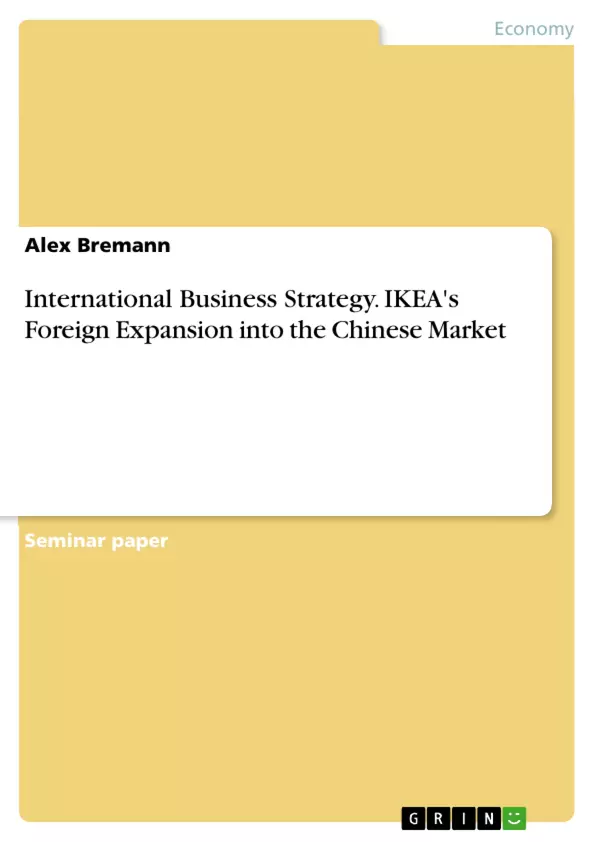Having only operated in the western culture, the Chinese market was one that IKEA had little to no experience of. Changing dynamics of consumer behavior and strong heterogeneity in terms of customers made it difficult for IKEA’s managers to predict future market trends in China. Before entering the Chinese market, IKEA had to consider, high import taxation, complex government regulations, complex consumer buying behaviors, and strong competition.
The paper will evaluate IKEA’s market entry strategies, routines & firm specific-advantages. Using Verbekes model to identify IKEA’s early expansion into foreign markets will give the reader a clearer overview of IKEAs international operations. Looking into the Chinese market with the use of Porters Diamond model, while considering IKEA's various approaches to become successful in such an economically strong market, will give the reader some practical insights of the difficulties that can arise while expanding into foreign markets.
Inhaltsverzeichnis (Table of Contents)
- Introduction
- Background & IKEAs current approach
- IKEA's firm specific advantages (FSA)
- IKEA's Strategy
- Expansion/entry Strategies
- Ikeas expansion to China
- Approach
- Difficulties
- Outcome
- Outcome, results, or conclusion
Zielsetzung und Themenschwerpunkte (Objectives and Key Themes)
This study investigates the international business strategy of IKEA, focusing on its expansion into the Chinese market. The analysis examines the company's firm-specific advantages, its strategic approach, and the challenges and outcomes of its expansion into this new market.
- IKEA's Firm Specific Advantages (FSAs) and their role in international expansion
- IKEA's Business Strategy and its adaptation to different markets
- The challenges and opportunities of entering the Chinese market
- The impact of cultural differences on IKEA's expansion strategy
- The analysis of IKEA's success and its long-term implications for the company's global growth
Zusammenfassung der Kapitel (Chapter Summaries)
- Introduction: This chapter provides an overview of IKEA's history, its core values, and its unique business model. It highlights Ingvar Kamprad's entrepreneurial vision and the company's commitment to providing affordable, functional furniture.
- Background & IKEAs current approach: This chapter examines IKEA's firm-specific advantages, including its flat-pack design, self-service approach, and cost-efficient production methods. It also discusses IKEA's overall business strategy and its various expansion strategies.
- Ikeas expansion to China: This chapter explores IKEA's entry strategy into the Chinese market, including the challenges faced by the company due to cultural differences, market competition, and regulatory hurdles. It also analyzes the outcomes of IKEA's expansion in China.
Schlüsselwörter (Keywords)
This text delves into the realm of international business strategy, particularly focusing on the foreign expansion of IKEA into the Chinese market. Key topics include firm-specific advantages, strategic approaches, market entry strategies, cultural differences, and the complexities of global business expansion. The text explores how these factors impact the success of multinational enterprises like IKEA.
- Citation du texte
- Alex Bremann (Auteur), 2017, International Business Strategy. IKEA's Foreign Expansion into the Chinese Market, Munich, GRIN Verlag, https://www.grin.com/document/374774



